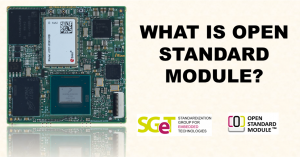Case Study: Designing Electric Vehicle Charging (EVC) Display with i.MX 6 SBC
The electric vehicle charging station also called electric vehicle supply equipment (EVSE), supplies power for recharging electric vehicles. A charging station typically includes power stages, digital processing to monitor power delivery to the vehicle, and HMI to provide a more intuitive user interface.
The display monitors are essential for EV charging stations to provide the best control and user experience. The display includes information on the current battery level, the charge status, and the estimated time until full charge.
Designing a display monitor for a charging station requires high efficiency, accuracy, and connectivity levels. The i.MX 6 Single Board Computer is the perfect choice for powering display control, thanks to its compatibility with interfaces such as HDMI, LVDS, and MIPI DSI.
Available in Pico ITX form factor (100mmx72mm), the i.MX 6 Single Board Computer brings out the full capabilities of an ARM cortex A9 processor offering all standard interfaces such as Gigabit Ethernet, PCIe, SATA 3.0, USA 2.0, and GPIOs. HDMI, LVDS, and MIPI DSI interfaces are available for camera and display connectivity. In addition, the i.MX 6 SBC supports Linux and Android OS and has a wide temperature range.
Key features of i.MX 6 Single Board Computer
 i.MX 6 Q/D/DL/S Core CPU
i.MX 6 Q/D/DL/S Core CPU- Up to 4GB DDR3 Memory
- OpenGL®ES 2.0, OpenVG™ 1.1 Graphic accelerators
- Multi-format HD 1080p encode & decode
- 1000/100/10 Mbps Ethernet
- LVDS connector with Backlight Support
- HDMI connectors
- RTC controller
- MIPI DSI connectors
Integrated audio is implemented with AC’97 Audio Codec to enable high-quality multichannel recording and playback.
The i.MX 6 Single Board Computer allows you to connect to the internet via a gigabit ethernet port, which opens up a world of online possibilities. Users can remotely monitor and manage charge stations and stay updated with their charge progress from any point.
The Single Board Computer provides a faster and a reliable system to the designers with all necessary interface connectors accelerating their product development time with reduced cost.
Real-time control (RTC) of an electric vehicle charging station
Enhancing real-time control capabilities can help improve EV charging station management. The real-time controller plays an essential role in EV charging stations by providing a real-time interface to communicate with the energy grid and the user to ensure
- Accurate timekeeping when the connection with the grid communication network is interrupted
- Users save energy and money by running RTC from a low-power energy source
- Reliable real-time data for smart operations
The technology inside the EV charging station must be cost-effective and efficient. Generally, EV charging systems convert the grid’s AC power into DC power to charge an EV battery. Real-time control is critical to delivering a fast-charging experience and low power loss, all while reducing strain on grid infrastructure. The efficiency of this system also allows drivers to quickly recharge their batteries and get back on the road.
Thermal considerations for a fast-charging of EV batteries
 Thermal management is a critical design factor in electric vehicle charging stations. To reduce charging time, charging power must be increased. As a result, the temperature will rise dramatically. Controlled thermal management becomes critical to efficiently dissipate heat and enable fast charging.
Thermal management is a critical design factor in electric vehicle charging stations. To reduce charging time, charging power must be increased. As a result, the temperature will rise dramatically. Controlled thermal management becomes critical to efficiently dissipate heat and enable fast charging.
To address thermal characteristics and requirements, iWave provides customers with suitable heat sinks for the i.MX 6 Single Board Computer for efficient operations.
More information on the i.MX 6 Single Board Computer can be here.
For more information or inquiries drop us an email at mktg@iwavesystems.com.
Keep Reading
 |  |  |
| What is an Open Standard Module? | Kintex UltraScale+ System on Module | Telematics Control Unit for EV fleet |



